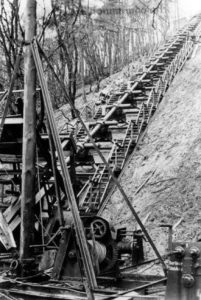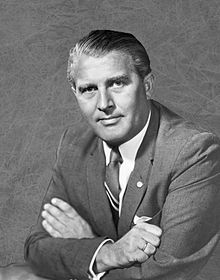v-2 missile
 I am always amazed at the lengths nations will go to try to have a better weapon with which to war against their enemies. Some of the weapons were horrifically great successes, while others only succeeded in being amusingly unsuccessful. It seems that the Germans were famous for trying to come up with unusual ideas for weaponry. In fact, World War II seemed to be full of bizarre weapons.
I am always amazed at the lengths nations will go to try to have a better weapon with which to war against their enemies. Some of the weapons were horrifically great successes, while others only succeeded in being amusingly unsuccessful. It seems that the Germans were famous for trying to come up with unusual ideas for weaponry. In fact, World War II seemed to be full of bizarre weapons.
Wars always present opportunities for technological development, but Germany seemed to be particularly motivated to pour considerable resources into weapons projects. The level of success, varied with the weapons. That is not unusual, as weapons go, but I think that when you look some of the bizarre weapon designs that Germany came up with really seemed like a recipe for calamity to me. The weapons they came up with had varying degrees of success. The Germans developed the V-2 rocket, which both rained destruction on the United Kingdom and jumpstarted the space race. On the other hand, they also tried to build a “sun gun,” an orbital heat ray that was supposed to use reflected sunlight to torch cities.
The V-3 cannon project falls in the middle of the spectrum of weaponry. In the end, it never threatened the Allied powers, but if it had been given more production time, it very well could have. The V-3 was an extremely long artillery piece, over 430 feet in length. It was designed to fire projectiles up to a distance of 100 miles away. The V-3 cannon was built to bombard British cities from mainland Europe, bypassing the need for planes or the V-2. These enormous guns had been in development since World War I, on both sides of the conflict, but to this point these weapons hadn’t been deployed in combat. The problem was that the size of an explosion needed to propel a projectile over such a distance was so large that it would quickly destroy any gun barrel. They just couldn’t get that part fixed.
At the outbreak of World War II, the Germans rediscovered the plans for the V-3 and began to research them  again. In 1943, Hitler restarted the V-3 project under his Armaments and War Procurement Minister, Albert Speer. The first goal was to solve the explosion problem. It was decided that the V-3 would use several small explosions that would propel the projectile along the barrel. Even with that change, the barrel was so large and unwieldy that it couldn’t be aimed. It had to be built already aiming at the intended target, and the target had to be the size of a city. That is a tall order.
again. In 1943, Hitler restarted the V-3 project under his Armaments and War Procurement Minister, Albert Speer. The first goal was to solve the explosion problem. It was decided that the V-3 would use several small explosions that would propel the projectile along the barrel. Even with that change, the barrel was so large and unwieldy that it couldn’t be aimed. It had to be built already aiming at the intended target, and the target had to be the size of a city. That is a tall order.
The Germans made plans to build 50 V-3 cannons on the French coastline, but RAF bombings delayed the project. When the Allies retook France in 1944, the V-3 project was again abandoned. The Allies didn’t learn of the V-3 project until after World War II had ended. Winston Churchill said that “if the guns had been completed, they could have devastated England more than any other German weapon.” Thankfully the Allies retook France in time to avoid such a disaster.
 There is good that comes from science, and there is bad too, unfortunately. Things like weapons of warfare would most likely fall into the bad that comes from science. Still, weapons are necessary, and maybe it isn’t the weapon that is bad, but rather the user. Wernher von Braun was a rocket scientist in Hitler’s Germany. His job was to build bigger and more dangerous weapons. The V-2 missile was the culmination of von Braun’s work so far. On October 3, 1942, von Braun tested the V-2 missile. The missile was fired successfully from Peenemunde, as island off Germany’s Baltic coast. It traveled 118 miles in that test; and later, in evil weapon style, it proved extraordinarily deadly in the war. The V-2 missile was the precursor to the Intercontinental Ballistic Missiles (ICBMs) of the postwar era.
There is good that comes from science, and there is bad too, unfortunately. Things like weapons of warfare would most likely fall into the bad that comes from science. Still, weapons are necessary, and maybe it isn’t the weapon that is bad, but rather the user. Wernher von Braun was a rocket scientist in Hitler’s Germany. His job was to build bigger and more dangerous weapons. The V-2 missile was the culmination of von Braun’s work so far. On October 3, 1942, von Braun tested the V-2 missile. The missile was fired successfully from Peenemunde, as island off Germany’s Baltic coast. It traveled 118 miles in that test; and later, in evil weapon style, it proved extraordinarily deadly in the war. The V-2 missile was the precursor to the Intercontinental Ballistic Missiles (ICBMs) of the postwar era.
German scientists, led by von Braun, had been working on the development of these long-range missiles since the 1930s. I don’t know if von Braun was doing this work by choice, which would make him very likely as evil as the weapons of destruction he made, or whether, like so many of the German people under Hitler’s evil rule, he simply had no say in the matter. Whatever the case may be, von Braun was good at what he did. The science, which clearly must have fascinated him, was a work to which he was well suited. He understood it. He knew how to make it do hat he wanted it to do, and become what he wanted it to become…or, at least what he was told to make it become. Still, it took time to perfect. Three trial launches had already failed. The fourth in the series, known as A-4,  finally saw the V-2, a 12-ton rocket capable of carrying a one-ton warhead, successfully launched. I wonder just how much pressure was on von Braun at that fourth launch attempt. Could it have cost him his life, or his freedom, if he did not successfully create this weapon that Hitler wanted so badly.
finally saw the V-2, a 12-ton rocket capable of carrying a one-ton warhead, successfully launched. I wonder just how much pressure was on von Braun at that fourth launch attempt. Could it have cost him his life, or his freedom, if he did not successfully create this weapon that Hitler wanted so badly.
The V-2 was unique in several ways. First, it was virtually impossible to intercept, making it a serious threat to anyone it was aimed at. Upon launching, the missile rises six miles straight up. Then, it proceeds on an arced course, cutting off its own fuel according to the range desired. The missile then tips over and falls on its target-at a speed of almost 4,000 miles per hour. That would make it extremely difficult to blow up in flight, since hitting something moving at that speed would take serious accuracy, and heat seeking missiles were not developed yet. The missile hits with such force that it burrows itself several feet into the ground before exploding. In addition, the missile had the potential of flying a distance of 200 miles, and the launch pads were portable, making them impossible to detect before firing.
September 6, 1944 became the first real use of the V-2, when two missiles were fired at Paris. On September 8, two more were fired at England, which would be followed by more than 1,100 more during the next six months. More than 2,700 British citizens died because of the rocket attacks. After the war, both the United States and the Soviet Union captured samples of the rockets for reproduction. They also captured the scientists  responsible for their creation. Following the war, von Braun was secretly moved to the United States, along with about 1,600 other German scientists, engineers, and technicians, as part of Operation Paperclip. He worked for the United States Army on an intermediate-range ballistic missile program, and he developed the rockets that launched the United States’ first space satellite Explorer 1.
responsible for their creation. Following the war, von Braun was secretly moved to the United States, along with about 1,600 other German scientists, engineers, and technicians, as part of Operation Paperclip. He worked for the United States Army on an intermediate-range ballistic missile program, and he developed the rockets that launched the United States’ first space satellite Explorer 1.
His group was assimilated into NASA, where he served as director of the newly formed Marshall Space Flight Center and as the chief architect of the Saturn V super heavy-lift launch vehicle that propelled the Apollo spacecraft to the Moon. He also advocated for a human mission to Mars. In 1967, von Braun was inducted into the National Academy of Engineering and in 1975, he received the National Medal of Science. Von Braun died on June 16, 1977 of pancreatic cancer in Alexandria, Virginia at age 65. He was buried at the Ivy Hill Cemetery. His gravestone quotes Psalm 19:1: “The heavens declare the glory of God; and the firmament sheweth his handywork” (KJV).

